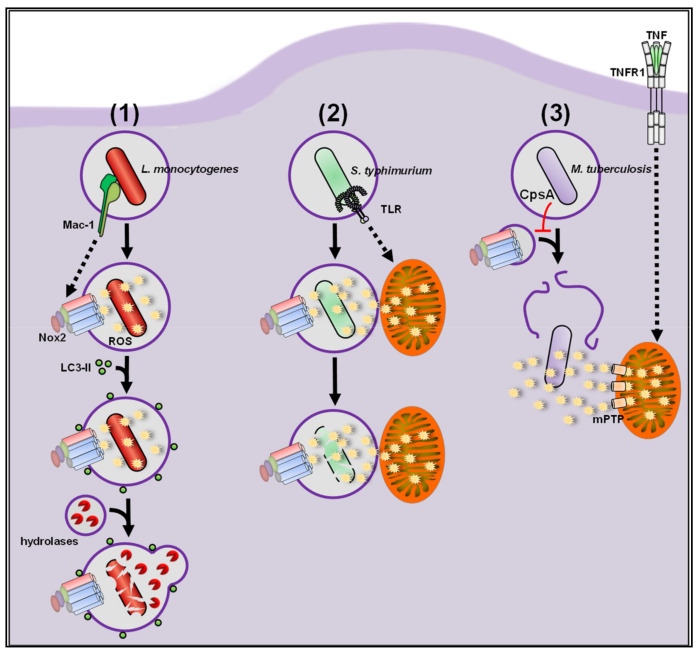Figure 5.
(1) During infection with L.m., tissue macrophages activate a highly antimicrobial phagocytic pathway called LC3-associated phagocytosis (LAP). LAP induction strictly depends on production of extracellular ROS by Nox2, which induces the eponymous recruitment of LC3 to phagosomes. These so-called LAPosomes show enhanced fusion with lysosomes, leading to improved killing of L.m. by macrophages. (2) S.t. can evade degradation in the phagosome by using oxidative stress for their benefit. ROS production by Nox2 contributes to S.t. killing but, on its own, is not sufficient for complete eradication of the pathogen. Mitochondria are recruited as additional ROS source via Toll-like receptor (TLR) signaling to overcome the antioxidative capacity of S.t. resulting in its degradation. (3) Mtb inhibits Nox2-mediated ROS production and subsequent LAP induction through its virulence factor CpsA and quickly escapes into the cytosol. Macrophages activate excessive production and release of mtROS through the mitochondrial permeability transition pore (mPTP) via TNF receptor 1 (TNFR1) signaling to combat cytosolic Mtb.

